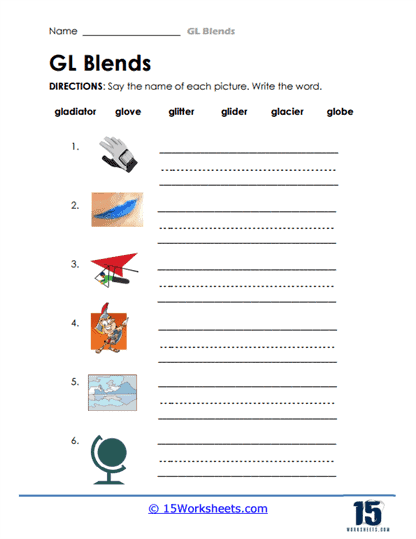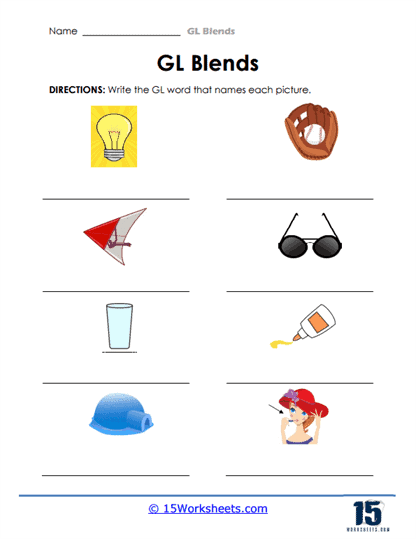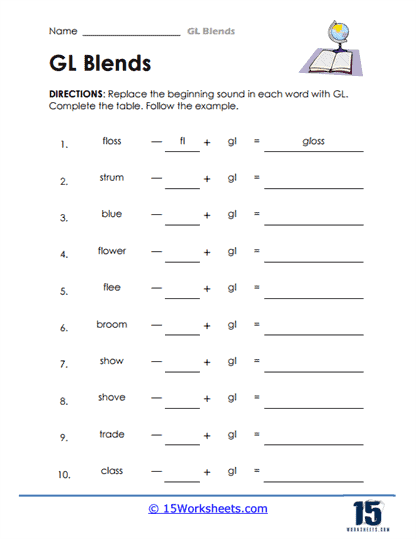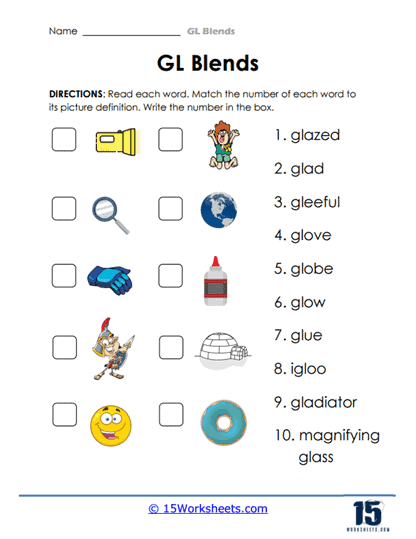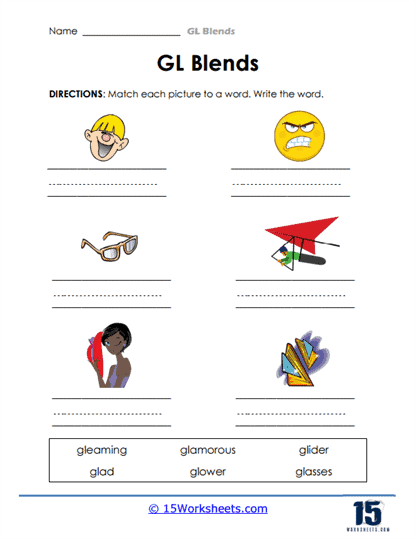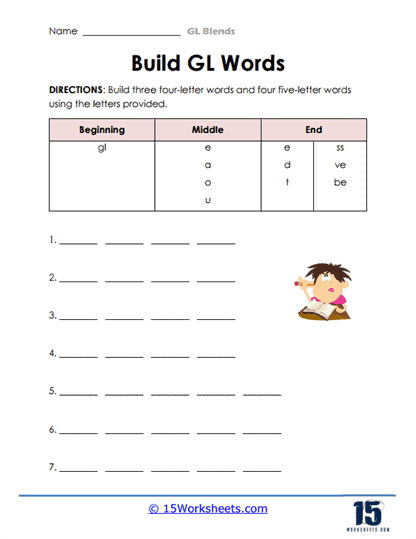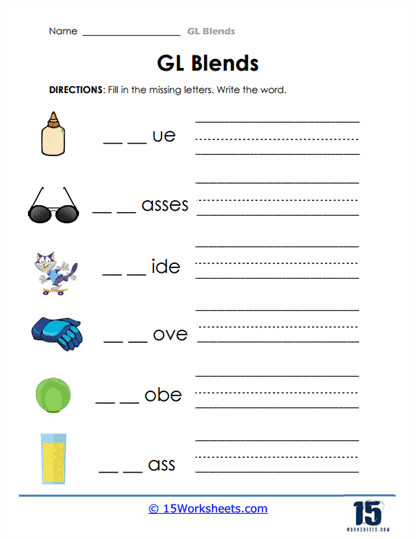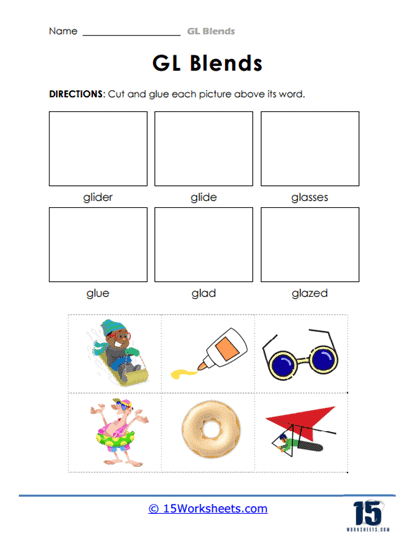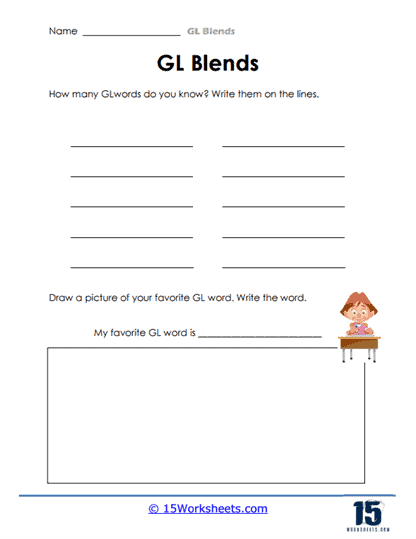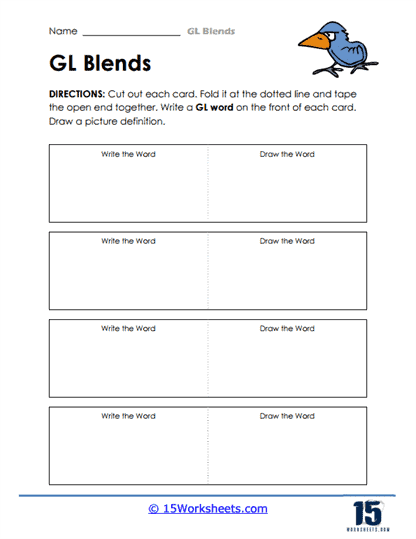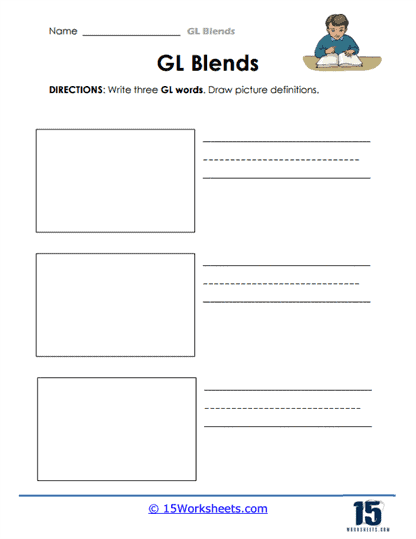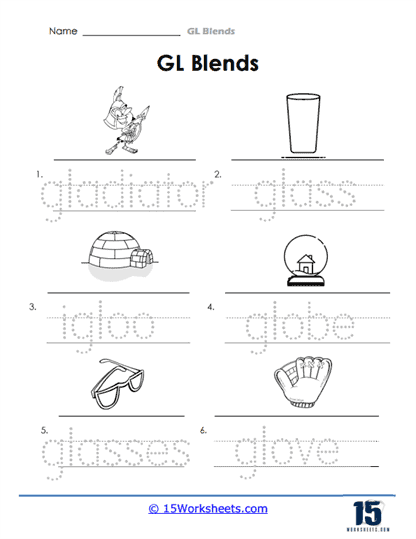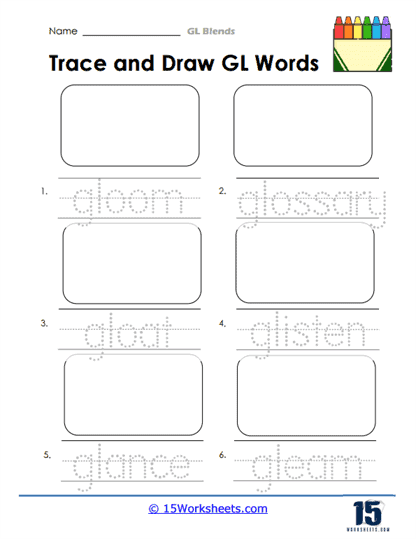Gl Blends Worksheets
All About These 15 Worksheets
GL blends worksheets are awesome for phonics instruction. By focusing on specific blends like “gl,” these worksheets offer targeted practice that helps children master the intricacies of the English language.
These worksheets are vital tools to help children understand and practice specific phonetic blends in the English language, enhancing their reading and writing skills. Let’s dive deeper into understanding what these worksheets are and the variety of exercises they offer.
What Are Blends In Phonics?
“Blends” in phonics refers to two or three consonants that appear together in words and produce distinct sounds that smoothly flow into each other. For example, in the word “glow,” the letters “g” and “l” form a blend, producing the “gl-” sound. “Gl” blends worksheets specifically focus on this “gl-” sound, helping children recognize, read, and write words that start with or contain this blend.
Blending is an essential skill in early literacy. By mastering blends, children can decode and sound out words more effectively, leading to smoother reading and better comprehension.
Types of Exercises
Blend Identification – These exercises ask students to circle or highlight words or pictures that begin with the “gl” blend from a list or group. For instance, given words like “glass,” “flag,” “glove,” and “fish,” the child would identify “glass” and “glove” as words that have the “gl” blend.
Purpose: Helps students identify the presence of the blend in different words.
Picture-to-Word Matching – Children are provided with a series of pictures and a list of words. They must match the image to the corresponding word that uses the “gl” blend. For example, a picture of a globe would be matched to the word “globe.”
Purpose: Reinforces the blend’s sound and its association with specific objects or actions.
Fill in the Blanks – Here, students are given sentences or words with missing letters, and they need to fill in the blanks with the correct “gl” blend to complete the word. For instance, “_ove” would be completed as “glove.”
Purpose: Allows students to practice recalling and writing the blend in context.
Word Scrambles – Words containing the “gl” blend are jumbled, and students must unscramble them. For example, “lgass” should be rearranged as “glass.”
Purpose: Enhances a child’s familiarity with the blend and improves their spelling skills.
Sorting Exercises – Children are given a mix of words and are asked to sort them into categories, such as “Words With GL Blend” and “Words Without GL Blend.”
Purpose: Helps students distinguish between words that have the blend and those that don’t, reinforcing their understanding of the concept.
Blend Construction – Here, children are given individual letters and are tasked with forming the “gl” blend. This might involve matching the letter “g” with the letter “l” or placing magnetic letters in the right order.
Purpose: Reinforces the formation and recognition of the “gl” blend.
Rhyming Words – Children are given a “gl” blend word, such as “glad,” and are tasked with finding or producing words that rhyme with it.
Purpose: Enhances phonemic awareness and understanding of word patterns.
The Importance of GL Blends
The “GL” blend is a combination of two consonants, ‘G’ and ‘L,’ that creates a unique sound when pronounced together. Understanding and mastering GL blends is important for several reasons:
- Enhanced Pronunciation: Learning to pronounce GL blends correctly improves a student’s overall articulation and phonemic awareness. This skill helps them speak clearly and confidently, which is a valuable life skill.
- Improved Reading Proficiency: Many words in the English language contain GL blends. Recognizing and reading these words correctly is crucial for fluent and accurate reading. Without this skill, students may struggle with words like “glass,” “glow,” or “glide.”
- Vocabulary Expansion: As students explore words containing GL blends, they expand their vocabulary. Exposure to a wide range of words helps them understand context and meaning, making them more proficient readers and writers.
- Spelling Proficiency: Understanding the GL blend is not limited to reading; it also plays a significant role in spelling. Students who can recognize the GL blend can spell words like “globe,” “glamour,” and “glitter” correctly.
This collection of GL Blends worksheets is an invaluable resource for educators and parents seeking to enhance their students’ phonics and language skills. Understanding GL blends is not just about reading and spelling; it’s about building a robust foundation for effective communication and literacy.
By mastering GL blends through these engaging worksheets, students will be better prepared for a lifetime of confident reading, writing, and speaking, giving them a significant advantage in their academic and personal lives. Invest in this collection today and watch your students flourish on their language journey.


